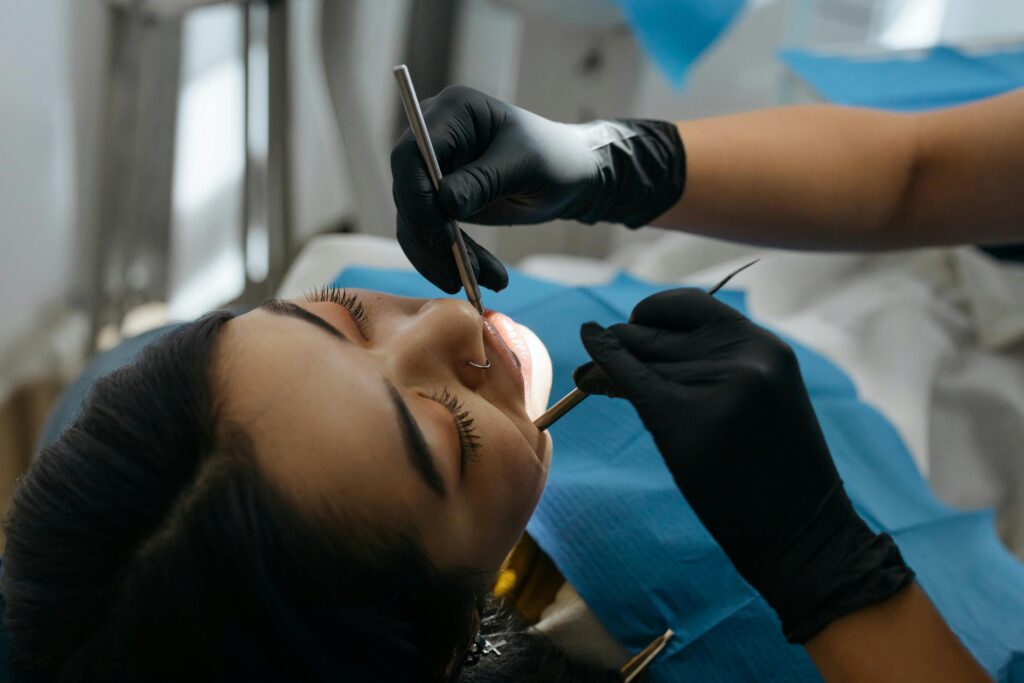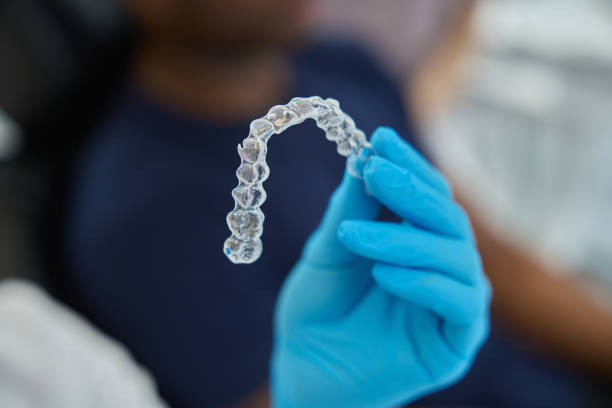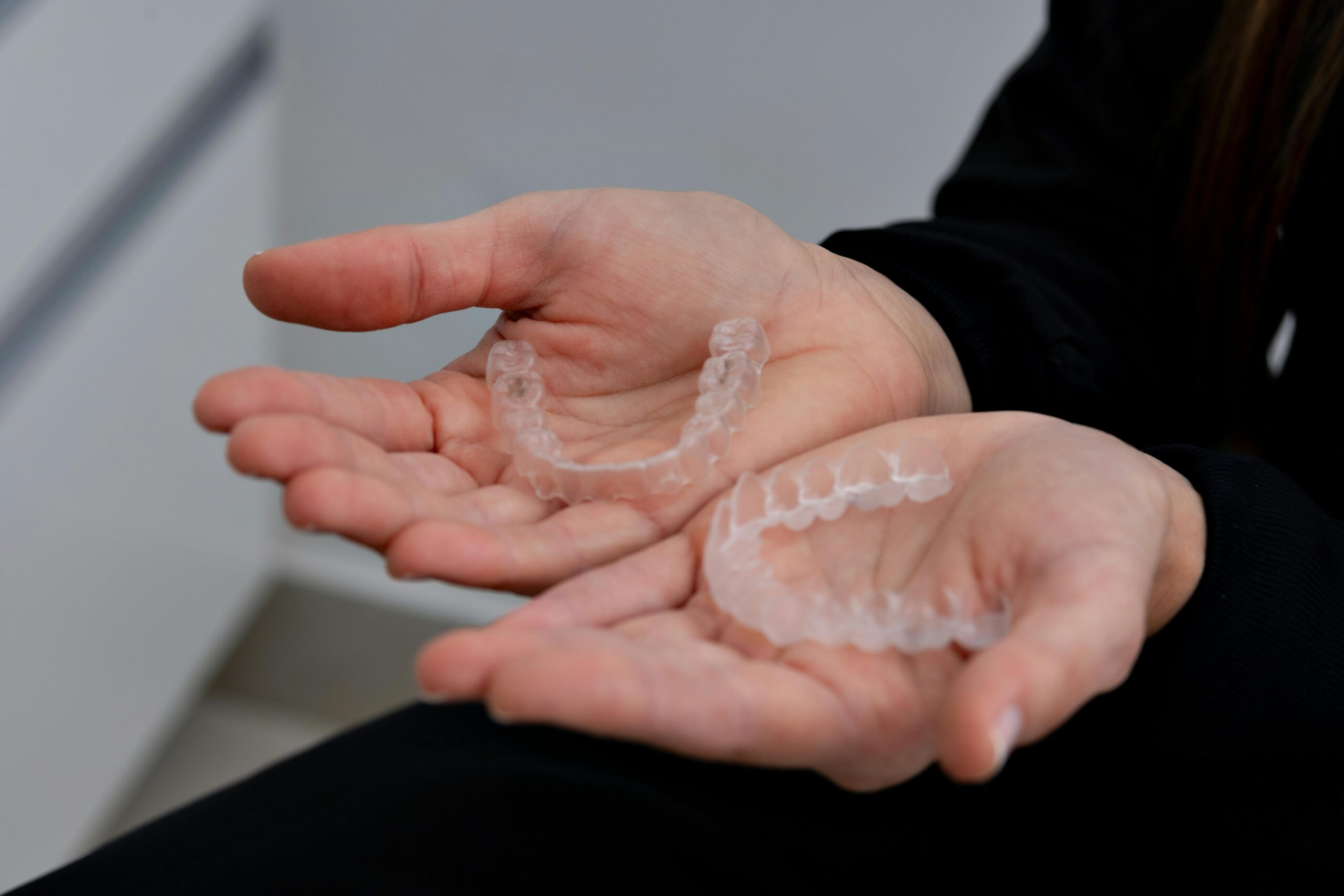Clear Teeth Aligners Clear teeth aligners have become a popular alternative to traditional braces, with the leading brand Invisalign standing out in …
Do's and Don'ts after Wisdom Tooth Extraction
Discover essential do’s and don’ts after wisdom tooth extraction, including tips to manage pain, prevent complications, and promote healing.
Having a wisdom tooth removed can be a bit uncomfortable, but taking care of yourself afterwards can help you heal faster and avoid complications. Here are some important do’s and don’t’s following wisdom tooth extraction. We also provide information on when you can start eating again and possible complications to watch out for.

Our Do’s and Don’ts after wisdom tooth extraction:
Do’s :
- Follow your dentist’s instructions: Your dentist or oral surgeon will give you specific instructions on how to care for your mouth after the procedure. Follow these instructions carefully to ensure proper healing.
- Rest: Take it easy for the first 24 hours after surgery. Avoid strenuous activities that could increase bleeding or swelling.
- Apply ice: To reduce swelling and discomfort, apply an ice pack to the outside of your cheek for 20 minutes on, 20 minutes off, for the first 24 hours.
- Eat soft foods: Stick to a diet of soft, easy-to-chew foods for the first few days after surgery. This can include things like yogurt, mashed potatoes, soup, and smoothies.
- Keep your mouth clean: Gently rinse your mouth with warm salt water several times a day to keep the surgical site clean and prevent infection.
- Take pain medication as prescribed: Your dentist may prescribe pain medication to help manage any discomfort. Take it as directed, and don’t hesitate to ask if you have any questions or concerns.
Don’ts:
- Don’t smoke: Smoking can delay healing and increase the risk of complications. Avoid smoking for at least 72 hours after surgery, if not longer.
- Don’t drink through a straw: Using a straw can dislodge the blood clot that forms in the socket where the tooth was removed, leading to a painful condition called dry socket. Stick to sipping liquids from a cup instead.
- Don’t rinse forcefully: Avoid rinsing your mouth forcefully for the first 24 hours after surgery, as this can also dislodge the blood clot. Instead, gently swish with salt water as directed by your dentist.
- Don’t eat hard or crunchy foods: Steer clear of foods that are hard to chew, like nuts, chips, and popcorn, as they can irritate the surgical site and delay healing.
- Don’t touch the surgical site: Avoid touching the area where the tooth was removed with your fingers or tongue, as this can introduce bacteria and increase the risk of infection.
How long after wisdom tooth extraction can I eat?
You may be eager to eat after your wisdom tooth removal, but it’s important to give your mouth time to heal before diving into your favorite foods. In general, you can start eating soft foods as soon as you feel comfortable doing so, usually within the first 24 hours after surgery. However, you should avoid hot, spicy, and crunchy foods for at least the first few days, as they can irritate the surgical site and increase discomfort.
As you progress through the healing process, you can gradually reintroduce more solid foods into your diet. Be sure to chew on the opposite side of your mouth from where the tooth was removed to avoid putting pressure on the surgical site. If you experience any pain or discomfort while eating, stick to softer foods until you feel more comfortable.
Complications with Wisdom Tooth Removal
While wisdom tooth removal is a common and relatively safe procedure, there are some potential complications to be aware of:
- Dry socket: Dry socket occurs when the blood clot that forms in the socket where the tooth was removed becomes dislodged or dissolves prematurely. This can expose the underlying bone and nerves, leading to intense pain and delayed healing. Symptoms of dry socket include severe pain, bad breath, and an unpleasant taste in the mouth. Treatment typically involves cleaning the socket and placing a medicated dressing to promote healing.
- Infection: Infection is a risk with any surgical procedure, including wisdom tooth removal. Symptoms of infection include increased pain, swelling, redness, and discharge from the surgical site. Infections are usually treated with antibiotics, but in severe cases, additional surgery may be required to drain the infection.
- Nerve damage: In rare cases, the nerves near the surgical site can be damaged during wisdom tooth removal, leading to numbness, tingling, or loss of sensation in the lips, tongue, or chin. This usually resolves on its own over time, but in some cases, it may be permanent.
- Damage to surrounding teeth: During the extraction process, nearby teeth can be damaged or displaced. This is more likely to occur if the wisdom teeth are impacted or positioned close to neighboring teeth. Your dentist or oral surgeon will take precautions to minimise this risk, but it’s still something to be aware of.
To reduce your risk of complications, be sure to follow your dentist’s instructions for post-operative care, attend all follow-up appointments, and contact your dentist if you experience any unusual symptoms or complications.
Clinical Evidence:
A clinical study on third molar extraction identifies common complications: dry socket, infection, nerve damage, and damage to surrounding teeth. Dry socket causes intense pain and delays healing; infection risks overall oral health. Nerve damage can result in numbness or tingling in lips, tongue, or chin. Damage to surrounding teeth emphasises the need for precise technique. Preoperative evaluation, surgical precision, and postoperative monitoring are crucial to mitigate risks.
Research underscores the importance of postoperative care after wisdom tooth extraction. Recommendations include adequate rest, ice application to reduce swelling, soft diet to minimise irritation, and gentle rinsing with warm salt water for oral hygiene. Adhering to these practices enhances recovery and success of the procedure. By adhering to these practices, patients can optimise their postoperative care experience and enhance the overall success of the wisdom tooth extraction procedure.
Conclusion:
Remember, while complications can occur, most people recover from wisdom tooth removal without any problems. By following your our do’s and don’ts after wisdom tooth extraction, you can help ensure a smooth and speedy recovery. At The Harley Street Implant Centre, we have put patient safety at the centre of our care, with regular follow-ups, and a clear post-procedure plan.
References:
- Yamada (2022). Prevalence of and risk factors for postoperative complications after lower third molar extraction. Retrieved from: https://www.ncbi.nlm.nih.gov/pmc/articles/PMC9371489/
- Garry (2007). Complications of Third Molar Surgery. Retrieved from: https://exodontia.info/wp-content/uploads/2021/07/Oral_Maxillofacial_Surg_Clin_N_Am_2007._Complications_of_Third_Molar_Surgery.pdf
- Francesco (2011). Strategies used to inhibit postoperative swelling following removal of impacted lower third molar. Retrieved from: https://www.ncbi.nlm.nih.gov/pmc/articles/PMC3221082/
What is Composite Bonding? A comprehensive guide for patients Composite bonding has become a very popular cosmetic treatment, particularly for those seeking …
Add Your Heading Text Here Invisalign Tips and Tricks Invisalign is a modern alternative to the traditional braces. It is what it …
Invisalign vs Braces In the realm of orthodontics and dentistry, a common dilemma for patients is choosing between Invisalign vs braces. Both …



